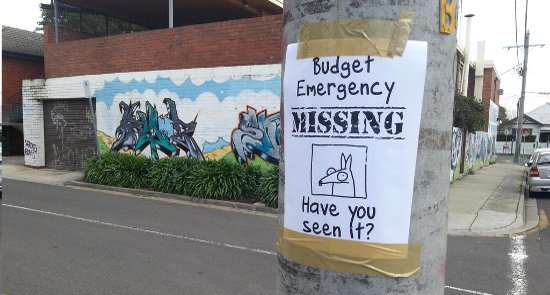Apparently we had a Federal Budget ‘emergency’ in 2014. Crisis was the narrative, and politicians from all parties revelled in the opportunity to push weird and wonderful agendas. The government still appears keen to cut the deficit, if not return the budget to surplus, but with the failing of discussions around GST increases and changes to negative gearing, are there any good ideas left? Here’s a few interesting ones to consider.
Remember when then Prime Minister Tony Abbott announced to the world that Australia was facing a budget emergency?
That was in mid-2014 when the deficit was 2% of GDP and net public debt was 15% of GDP. Mr Abbott promised to return the budget to surplus without raising taxes and without cutting spending on health, education, pensions, superannuation or public broadcasting. But his first budget was full of proposed cuts to health, education, pensions and public broadcasting.
Since then, the net public debt has grown to 16.9% of GDP, which is very low on a global scale. The United States, for example, is at 87.8% of GDP and Ireland at 117%. Yet the government remains fixated on getting the deficit down while still spending.
Two of the ideas floated recently – increasing the GST and changing negative gearing – don’t seem to have enough political legs, so here are some alternatives. Some quick fixes, if you like, to get the conversation moving from rhetoric to action.
Bank super profits tax
The big four banks made a combined $30 billion in profits in 2015, which is a very attractive number for a government looking for extra income. If, for argument’s sake, the government was to tax that profit at 33%, it would reap a handy $10 billion.
Obviously this would be a temporary windfall because the banks are unlikely to continue to shovel it in like they have previously. As we have pointed out, the big four have suddenly found that money is getting more expensive.
Bank profit margins from lending are also being squeezed to record lows as loan growth in the investor market has dipped to its slowest pace in almost two years, competition increases and ultra-low interest rates erode the industry’s profitability.

Sources: APRA, banks’ annual and interim reports, Credit Suisse, Deutsche Bank, Nomura Equity Research, RBA, UBS Securities Australia
Crank up the fuel excise
Australia consumes about 1.1 million barrels of crude oil per day and 80% of it is subject to a fuel excise.
Brent Crude oil spot prices slipped in January 2016 to the lowest monthly average price since December 2003, at US$31 per barrel. With the cost of fuel low and unlikely to rise much till after 2017 on U.S. Energy Department calculations, the opportunity is there for the government to make a few bucks.
Given that each 1¢ increase in the fuel excise would increase government revenue by about
$1.2 million a day, adding 30¢ for a year through a temporary increase in the tax would add $13 billion. Consumers have become used to paying higher fuel prices, so any political backlash would fade quickly.
Add the excise increase to the tax on bank profits and, voila, about $23 billion would be cut out of the $37 billion deficit.
Oil price between 2000 and 2015 $US

Add the internet
If that’s still not enough, former federal treasurer Peter Costello has a suggestion for making up the difference – tax the internet.
He says an internet access tax “could have been a fraction of a cent a year and it would have raised governments unbelievable amounts of money”.
Mr Costello says it should have been done in the early days of the internet before former U.S. President Bill Clinton declared that the internet would be free. “Once the Americans said the internet was going to be free, the rest of the world was going to follow suit,” he says.
But telcos are charging for internet use and all the government is getting out of it is tax on the little bits of profit that are not funnelled overseas.
With a bit of imagination, budget deficits could be a distant memory.
A snapshot of digital life in Australia, 2014





